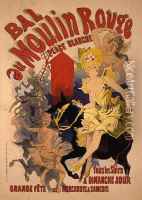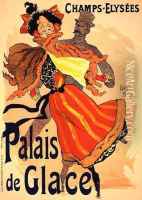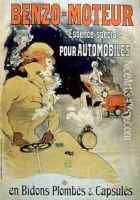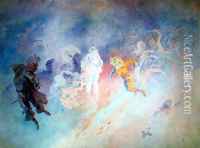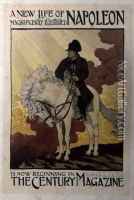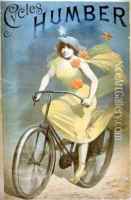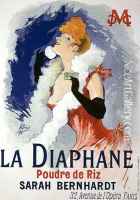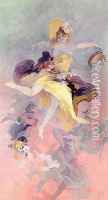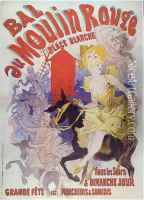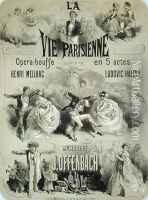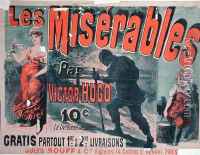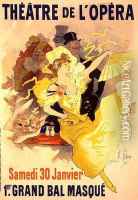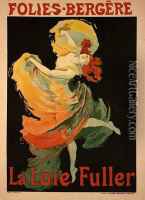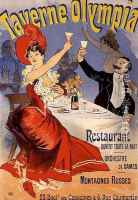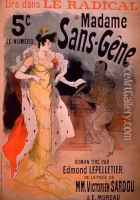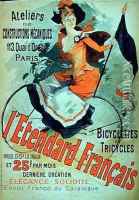Jules Cheret Paintings
Jules Chéret, born in Paris on May 31, 1836, was a French painter and lithographer who became a master of Belle Époque poster art. He is often referred to as the 'father of the modern poster.' Chéret's approach to poster art was innovative and characterized by a vibrant use of color and a dynamic sense of movement, elements that were at the time quite revolutionary in advertising.
Chéret received a basic education before beginning an apprenticeship with a lithographer at the age of 13. Demonstrating a talent for the medium, he went on to study at the École Nationale de Dessin in Paris under the academic artist Horace Lecoq de Boisbaudran. Chéret's early works were mostly lithographic music covers and illustrations for books and magazines, but his interests soon shifted to advertising.
In 1854, Chéret moved to London, where he was exposed to the burgeoning field of commercial art and the latest in printing technologies. He returned to Paris in 1866 and opened his own lithographic workshop. His innovative techniques, which allowed for more colors to be printed efficiently, earned him much success. Chéret's posters often featured free-spirited, joyous figures known as 'Chérettes,' who became symbolic of the new, modern Parisian woman. These figures were frequently depicted enjoying Parisian nightlife, and they embodied a sense of the freedom and joie de vivre of the time.
Chéret's work was highly influential in the development of the Art Nouveau movement. He was awarded the Légion d'honneur by the French government in recognition of his outstanding contributions to the graphic arts. His posters are now considered masterpieces of the period and are highly collectible.
Jules Chéret passed away on September 23, 1932, at the age of 96. His legacy lives on in the advertising world, as he laid the foundation for modern advertising and poster making. His innovative use of color and form was not only groundbreaking in terms of aesthetic appeal but also in how it transformed public spaces into open-air museums. Chéret's influence can still be seen in modern graphic design, and his work continues to be celebrated in art history.
